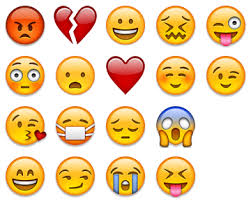CSS Sprites(CSS sprite)
1. What are CSS Sprites?
General css sprite is a web image application processing method. It allows you to include all the scattered pictures involved in a page into one big picture, so that when the page is accessed, the loaded pictures will not be displayed one by one as before. . Then use the combination of CSS "background-image", "background-repeat" and "background-position" to position the background.
2. Advantages and disadvantages of using CSS Sprites
Advantages:
1. Reduce the http requests of web pages, thereby greatly improving the performance of the page.
2. Reduce the bytes of pictures. The bytes of merging multiple pictures into one picture are always less than the sum of bytes of multiple pictures.
3. Solve the problem of naming pictures.
Disadvantages:
1. When merging pictures, multiple pictures should be merged into one picture in an orderly and reasonable manner, and enough space should be left to prevent unnecessary backgrounds from appearing in the section;
2. On adaptive pages under widescreen and high-resolution screens, if the picture is not wide enough, it is easy for the background to break;
3.. When developing CSS Sprites, it is necessary to measure and calculate the precise position of each background unit. It is recommended to use the CSS Sprites style generation tool.
4. During CSS Sprites maintenance, if the page background is slightly changed, this merged image will usually need to be changed.
Summary: Generally, CSS Sprites combined layout is used for local small box layout and is not suitable for large backgrounds and large layout backgrounds. For example, small partial layout, small icon background, small navigation background and other CSS layouts. In short, many times we have to weigh the pros and cons before deciding whether to use CSS Sprites.
Three. Give me a chestnut
A picture of Emoji


<ul>
<li class="Emoji1"></li>
<li class="Emoji2"></li>
<li class="Emoji3"></li>
<li class="Emoji4"></li>
</ul>
*{
margin: 0px;
}
ul,li{
list-style: none;
}
li{
width:50px;
height:50px;
overflow: hidden;
background: url('Emoji.jpg') -0px -0px no-repeat;
}
.Emoji1{
background-position: -0px -0px;
}
.Emoji2{
background-position: -0px -50px;
}
.Emoji3{
background-position: -0px -100px;
}
.Emoji4{
background-position: -0px -150px;
}

Hot AI Tools

Undresser.AI Undress
AI-powered app for creating realistic nude photos

AI Clothes Remover
Online AI tool for removing clothes from photos.

Undress AI Tool
Undress images for free

Clothoff.io
AI clothes remover

AI Hentai Generator
Generate AI Hentai for free.

Hot Article

Hot Tools

Notepad++7.3.1
Easy-to-use and free code editor

SublimeText3 Chinese version
Chinese version, very easy to use

Zend Studio 13.0.1
Powerful PHP integrated development environment

Dreamweaver CS6
Visual web development tools

SublimeText3 Mac version
God-level code editing software (SublimeText3)

Hot Topics
 What is the purpose of the <datalist> element?
Mar 21, 2025 pm 12:33 PM
What is the purpose of the <datalist> element?
Mar 21, 2025 pm 12:33 PM
The article discusses the HTML <datalist> element, which enhances forms by providing autocomplete suggestions, improving user experience and reducing errors.Character count: 159
 How do I use HTML5 form validation attributes to validate user input?
Mar 17, 2025 pm 12:27 PM
How do I use HTML5 form validation attributes to validate user input?
Mar 17, 2025 pm 12:27 PM
The article discusses using HTML5 form validation attributes like required, pattern, min, max, and length limits to validate user input directly in the browser.
 What is the purpose of the <progress> element?
Mar 21, 2025 pm 12:34 PM
What is the purpose of the <progress> element?
Mar 21, 2025 pm 12:34 PM
The article discusses the HTML <progress> element, its purpose, styling, and differences from the <meter> element. The main focus is on using <progress> for task completion and <meter> for stati
 What is the purpose of the <iframe> tag? What are the security considerations when using it?
Mar 20, 2025 pm 06:05 PM
What is the purpose of the <iframe> tag? What are the security considerations when using it?
Mar 20, 2025 pm 06:05 PM
The article discusses the <iframe> tag's purpose in embedding external content into webpages, its common uses, security risks, and alternatives like object tags and APIs.
 What is the purpose of the <meter> element?
Mar 21, 2025 pm 12:35 PM
What is the purpose of the <meter> element?
Mar 21, 2025 pm 12:35 PM
The article discusses the HTML <meter> element, used for displaying scalar or fractional values within a range, and its common applications in web development. It differentiates <meter> from <progress> and ex
 What are the best practices for cross-browser compatibility in HTML5?
Mar 17, 2025 pm 12:20 PM
What are the best practices for cross-browser compatibility in HTML5?
Mar 17, 2025 pm 12:20 PM
Article discusses best practices for ensuring HTML5 cross-browser compatibility, focusing on feature detection, progressive enhancement, and testing methods.
 What is the viewport meta tag? Why is it important for responsive design?
Mar 20, 2025 pm 05:56 PM
What is the viewport meta tag? Why is it important for responsive design?
Mar 20, 2025 pm 05:56 PM
The article discusses the viewport meta tag, essential for responsive web design on mobile devices. It explains how proper use ensures optimal content scaling and user interaction, while misuse can lead to design and accessibility issues.
 How do I use the HTML5 <time> element to represent dates and times semantically?
Mar 12, 2025 pm 04:05 PM
How do I use the HTML5 <time> element to represent dates and times semantically?
Mar 12, 2025 pm 04:05 PM
This article explains the HTML5 <time> element for semantic date/time representation. It emphasizes the importance of the datetime attribute for machine readability (ISO 8601 format) alongside human-readable text, boosting accessibilit






